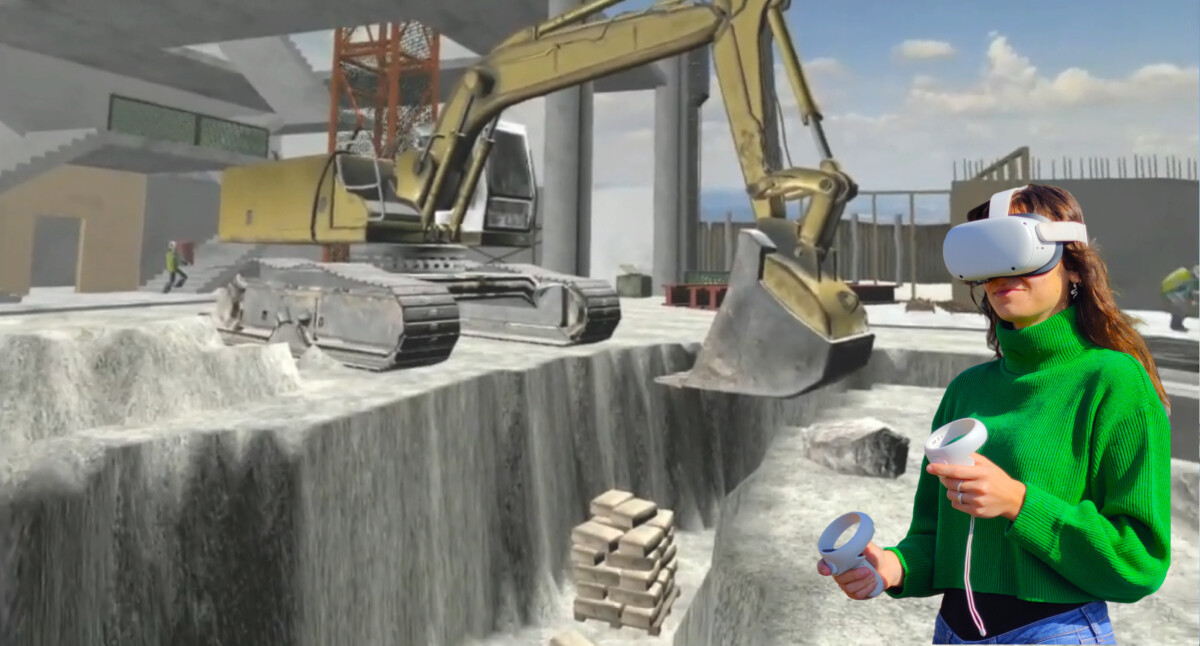Enhancing safety training with VR and AR
27 Nov 2024, News, Prove Your Know How, Technical

New technologies, such as virtual and augmented reality, can play a strategic role in enhancing safety training. BRANZ looks at its potential for reducing workplace accidents and minimising unsafe behaviours
Virtual reality (VR) can immerse users in computer-generated simulations that closely resemble real-life experiences, allowing individuals to experience different training scenarios and witness the realistic consequences of unsafe behavior while working on a construction site or during emergencies such as fires or earthquakes.
In the past decade, as the price of VR equipment has dramatically decreased, many new VR training applications have been developed worldwide for construction workers and building occupants. In 2015, VR headsets were primarily found in university laboratories. From 2016 onward, the wider public was introduced to the technology, although it remained expensive and required a high-end computer. Today, standalone VR headsets can be purchased for less than $500 and no longer require an external computer, making them affordable for any construction company.
VR Training Requires Doing
Despite the early promise of VR applications in safety training, two key questions have remained: Is VR training more effective than traditional methods, and should we invest in this new technology? The digitalisation team at Massey University’s School of Built Environment (builtenv.ac.nz/digitaltech) has definitive answers to these questions. It analyzed over 50 scientific articles published between 2013 and 2021 and found that VR outperforms traditional safety training in terms of how much trainees learn and remember – even weeks or months later.
The reason? VR training allows people to learn by doing and making mistakes, in contrast to traditional training, which is passive – trainees are expected to listen to instructions only.
Augmented Reality Takes It a Step Further
Another emerging technology that can disrupt the safety training field is augmented reality (AR) – an advanced visualization technology that incorporates digital elements, such as characters, sound, and text, into views of the real world. These digital elements are often referred to as holograms. Currently, AR is used in vehicle reversing cameras and in smartphone games like Pokémon Go. The technology is becoming increasingly mature in both hardware and software.
The School of Built Environment digitalisation team recently published results of one of the first AR safety training studies. The research shows how holograms can be used to teach building occupants what to do if they spot a fire in a building. A hologram of a firefighter instructs trainees on the necessary steps to contain and report the fire, and ultimately evacuate the building. By testing this prototype, the research team demonstrated that AR safety training was more effective in increasing motivation and retention than equivalent traditional training.
Testing Long-Term Recall
The Massey University team is currently working on the development and testing of new safety training methods as part of a Marsden project funded by the Royal Society Te Apārangi. The project, titled “How much do they recall? Measuring the effect of safety training on human memory,” will assess how much people remember from safety training over the course of a year.
As with previous research, the project will compare VR and AR safety training with traditional methods, aiming to identify new solutions and evidence to enhance future safety training programs and regulations, ultimately saving lives.
What’s the difference?
Augmented reality (AR) augments your surroundings by adding digital elements to a live view. Virtual reality (VR) is a completely immersive experience that replaces a real-life environment with a simulated one.
Article by Ruggiero Lovreglio, Daniel Paes and Zhenan Feng, Massey University School of Built Environment.This article was first published in Issue 202 of BRANZ Build magazine. Images supplied by Massey University School of Built Environment
Register to earn LBP Points Sign in
10 Comments
Leave a Reply
You must be logged in to post a comment.




#
great
Good
Great
+
good
1
Great
Thanks
Great